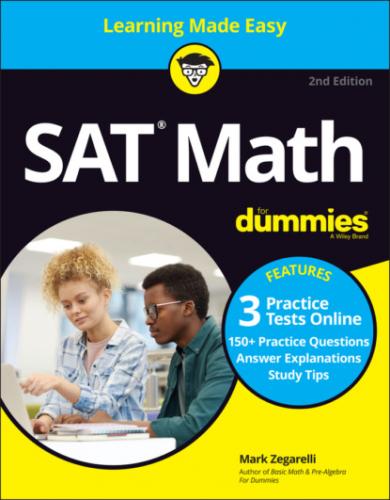11FIGURE 11-1: Graphs of the parent functions of polynomials of degrees 1 through...FIGURE 11-2: Comparing cross-through and bounce intercepts.
8 Chapter 12FIGURE 12-1: Positive quadratic functions are concave up and have a minimum val...FIGURE 12-2: The constant (c) term of a quadratic function tells you the y-inte...FIGURE 12-3: Two vertical transformations of .FIGURE 12-4: Two horizontal transformations of .FIGURE 12-5: Two combinations of vertical and horizontal transformations of .FIGURE 12-6: Two positive stretch-compress transformations of .FIGURE 12-7: Two negative stretch-compress-reflect transformations of .FIGURE 12-8: Quadratic functions with 2, 1, and no x-intercepts.
9 Chapter 13FIGURE 13-1: Exponential growth and decay functions.FIGURE 13-2: The parent radical function .
10 Chapter 14FIGURE 14-1: Vertical angles are equal to each other; linear pairs add up to ....FIGURE 14-2: Corresponding angles are equal to each other. FIGURE 14-3: Constructing the two special right triangles from a square and an ...FIGURE 14-4: A right triangle with sides of 1, 1, and . FIGURE 14-5: A right triangle with sides of 1, , and 2. FIGURE 14-6: The opposite side, adjacent side, and hypotenuse side of a right t...FIGURE 14-7: The 3–4–5 right triangle. FIGURE 14-8: The and right triangles. FIGURE 14-9: Understanding the trig identity . FIGURE 14-10: The unit circle.
11 Chapter 15FIGURE 15-1: The real number line.FIGURE 15-2: Two examples of circles on the xy-plane.
Guide
1
Cover
2
Title Page
3
Copyright
4 Table of Contents
5
Begin Reading
6
Index
7
About the Author
Pages
1
i
2
iii
3
iv
4
1
5
2
6
3
7
5
8
6
9
7
10
8
11
9
12
10
13 11
14
12
15
13
16
14
17
15
18
16
19
17
20
18
21
19
22
20
23
21
24
22
25
23
26
24
27
25
28
26
29
27
30
28
31
29
32
30
33
31
34
32
35
